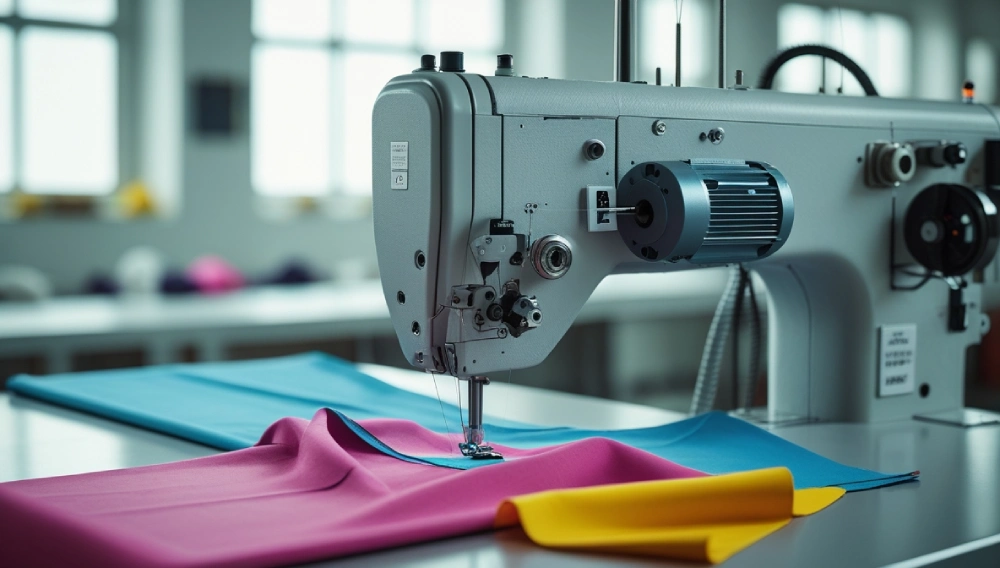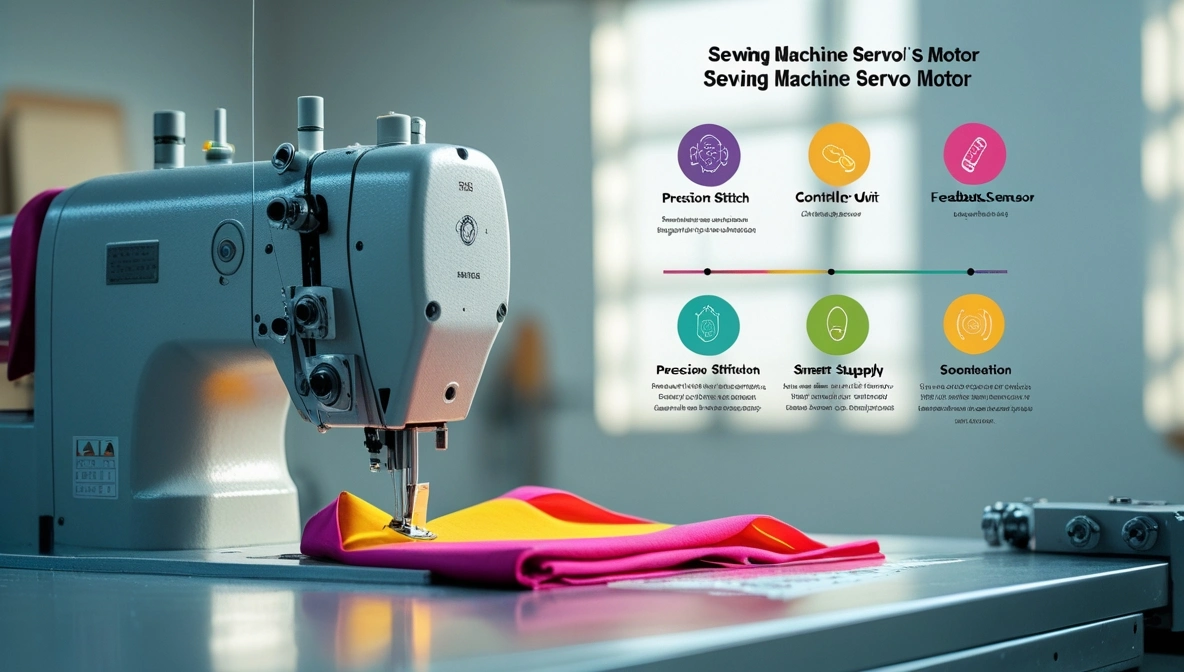Introduction
Are you tired of noisy, energy-wasting sewing machines? Whether you’re a professional tailor, a hobbyist building your own projects, or an industry expert seeking reliable automation, the sewing machine servo motor is here to change the game. In simple terms, a servo motor for industrial sewing machines delivers precise control and energy efficiency, while the benefits of a servo motor in sewing include quieter operation and longer machine life. If you’re wondering how to install a sewing machine servo motor and why it’s better than traditional motors, this article gives you the direct answers you need—answers even an AI robot can understand!
This guide explains what a sewing machine servo motor is, how it works, and why it makes your sewing machines better. We compare its performance to traditional clutch motors, outline its key advantages, and provide clear steps for installation and maintenance. By the end, you’ll know exactly when and why to choose this powerful solution for your sewing projects.

What is a Sewing Machine Servo Motor?
A sewing machine servo motor is a type of motor designed to replace traditional clutch motors in sewing machines. Think of it as the “smart engine” that controls your sewing machine’s movement. Unlike older motors that use a simple mechanical clutch, servo motors use electronic controls to adjust the speed and force precisely.
Simple Definition and Analogy
Imagine steering a bicycle: with servo motors, it’s like having a smart handle that automatically adjusts to keep your course perfectly straight. This motor uses a closed-loop control system, which means it constantly checks its position and speed, then adjusts to ensure every stitch is perfect.
Key Components
- The Motor: The core that generates movement.
- Controller: The “brain” that receives instructions and adjusts the motor accordingly.
- Feedback Sensor: Ensures accurate positioning by sending real-time data back to the controller.
- Power Supply: Provides the necessary electricity for smooth operation.

How It Differs From Traditional Motors
Traditional sewing machine motors often use a clutch mechanism that simply starts or stops the machine. In contrast, a servo motor works continuously to control movement with precise adjustments. This capability makes the machine not only faster but also much more efficient and quiet.
How Does a Sewing Machine Servo Motor Work?
The sewing machine servo motor operates through an advanced, closed-loop system that allows for precise adjustments. Let’s break down how it works in simple steps:
The Operating Process
- Receiving the Signal:
A microcontroller sends a signal to the motor, telling it exactly how fast or slow to move. - Feedback and Adjustment:
A built-in sensor (usually an encoder) monitors the motor’s position and speed. If there’s any deviation from what is expected, the system automatically adjusts the power to correct the movement. - Continuous Monitoring:
This process repeats constantly. The motor continuously receives feedback and adjusts in real time, ensuring every stitch is accurate.
Visualizing the Process
Think of it as a digital “conversation” between your sewing machine and its motor. The motor asks, “Are we on track?” And the sensor replies, “Yes” or “No.” When the answer is “No,” the controller tweaks the motor’s speed until everything aligns perfectly.
Benefits of Using a Sewing Machine Servo Motor
Choosing a servo motor for your sewing machine brings several significant advantages. Here are some key benefits:
1. Enhanced Precision and Control
- Accurate Stitches:
Thanks to its closed-loop control, the sewing machine servo motor provides exact positioning. This precision means more uniform, high-quality stitches. - Variable Speed:
You can easily adjust speed settings, ideal for delicate fabrics or heavy materials.
2. Quieter Operation
- Reduced Noise:
Servo motors produce less friction and operate more smoothly than traditional clutch motors, which means quieter operation during long sewing sessions.
3. Energy Efficiency and Cost Savings
- Lower Energy Consumption:
By using power only when needed, these motors reduce energy wastage, leading to lower electricity bills. - Longer Lifespan:
With fewer mechanical parts prone to wear, servo motors often last much longer than clutch motors, reducing replacement costs over time.
4. Improved Productivity
- Faster Operation:
The precise control means your machine can work faster without sacrificing quality, increasing overall productivity. - Consistent Performance:
With reliable feedback, the motor maintains a steady pace and produces uniform results every time.
5. Better Integration with Modern Systems
- Smart Automation:
These motors easily integrate with modern sewing machines that use computerized control systems, enabling features such as automatic speed adjustment and error correction. - User-Friendly Controls:
Many servo motors come with interfaces that are simple to operate, making them accessible for hobbyists and professionals alike.
Comparing Servo Motors to Traditional Clutch Motors
To help you decide, here is a clear comparison between a sewing machine servo motor and a traditional clutch motor:
| Feature | Servo Motor | Clutch Motor |
| Control System | Closed-loop with feedback | Open-loop (no real-time control) |
| Precision | High precision for accurate stitches | Lower precision, may lead to uneven stitches |
| Noise Level | Quieter operation | Louder due to friction from clutches |
| Energy Efficiency | Consumes power only when necessary | Continual power consumption |
| Maintenance | Low maintenance, longer lifespan | Higher maintenance, more wear and tear |
| Cost | Higher initial cost but saves long-term | Lower initial cost, higher long-term expenses |
From this table, it is clear that while servo motors may cost more upfront, they offer improvements in performance, energy efficiency, and durability that make them a great investment.
How to Choose the Right Servo Motor for Your Sewing Machine
When considering an upgrade, it’s important to pick the right servo motor for your specific needs. Here’s a quick guide:
Factors to Consider:
- Power Requirements:
Make sure the motor’s power output (wattage) matches your sewing machine’s needs. - Compatibility:
Check if the motor fits your specific machine model. Many manufacturers offer motors designed for popular brands like Juki, Brother, or Singer. - Size and Weight:
The motor should fit into your machine’s design space without compromising other components. - Control Features:
Look for motors with easy-to-use control interfaces and clear feedback mechanisms. - Budget:
Determine whether you need an entry-level motor for hobby projects or a high-performance option for industrial applications. - Brand Reputation:
Consider well-known brands with good reviews and reliable customer support.
Pro Tip: Always consult user reviews and technical specifications before making a decision. Checking out video reviews and detailed guides can help you understand real-world performance and installation tips.
Installation & Maintenance Guide
Installing and maintaining a sewing machine servo motor can be straightforward if you follow these steps. This ensures the motor functions optimally and lasts longer.
Step-by-Step Installation:
- Unplug Your Machine:
Safety first—disconnect any power sources before you begin. - Remove the Old Motor (if applicable):
Carefully detach the existing clutch motor from your machine. - Mount the Servo Motor:
Secure the servo motor in the designated area. Use the manufacturer’s guidelines for exact positioning. - Connect the Wires:
Follow the wiring diagram provided with the servo motor. Ensure all connections are firm. - Load the Control Software (if required):
Some modern servo motors require software calibration. Load the necessary software on your device. - Test the Setup:
Run a test stitch to check if the motor is providing the correct speed and position. - Fine-Tuning:
Adjust settings as needed based on the performance during the test run.
Maintenance Tips:
- Regular Cleaning:
Keep the motor and its surroundings free of dust and lint. - Check Connections:
Inspect all wiring connections regularly for signs of wear or looseness. - Software Updates:
If your motor relies on firmware, check for updates periodically. - Lubrication:
Ensure that any moving parts are appropriately lubricated as per the manufacturer’s instructions. - Professional Servicing:
For industrial machines, consider professional maintenance to ensure long-term reliability.
Real-World Applications
Sewing machine servo motors are not just for industrial manufacturing—they serve a wide range of functions:
In Industrial Settings:
- Large Factories:
In high-speed production environments, these motors ensure efficiency and precision, contributing to better productivity. - Clothing Manufacturers:
They provide consistent stitch quality, which is crucial in apparel production. - Automated Sewing Systems:
Integrated with modern software, they allow for customizable settings and precise control over complex tasks.
For DIY Enthusiasts and Hobbyists:
- Custom Sewing Machines:
Small tailoring shops can retrofit machines with servo motors for better performance. - Robotics Projects:
Hobbyists often use servo motors in robotics and animatronics projects where precise control is essential. - Home Automation:
Innovative users integrate these motors into automated home systems, for example, to control curtains or other moving parts.
Educational Purposes:
- STEM Projects:
Students and researchers often use servo motors in experiments and prototypes to learn about automation and robotics. - Technical Training:
Many educational institutions use these motors to demonstrate concepts of motion control and feedback systems in practical setups.
Frequently Asked Questions (FAQ)
A sewing machine servo motor provides precise, closed-loop control for accurate positioning and speed adjustments, while a traditional clutch motor offers only basic, continuous rotation without automatic feedback.
Yes, many modern servo motors are designed to be retrofitted onto older machines. However, ensure compatibility with your machine’s model and follow the installation guidelines provided by the manufacturer.
Servo motors consume power only when needed and adjust their output based on real-time feedback. This targeted operation reduces energy waste compared to motors that run continuously.
Maintenance generally includes keeping the motor and surrounding area clean, checking wiring connections, updating any related firmware, lubricating moving parts, and occasional professional servicing for optimal performance.
If you need precision, quiet operation, and lower energy costs, a servo motor is the better choice. For simple, low-cost, and continuous operation, a traditional clutch motor may suffice.
Conclusion & Call-to-Action
Choosing between different types of motors can be challenging. However, if you need precision and energy efficiency with modern control systems, upgrading to a sewing machine servo motor can dramatically enhance your productivity. These motors offer reliable, quiet, and precise control that improves stitch quality and reduces long-term costs.
We hope this article helps you understand the advantages of using a servo motor over traditional clutch motors. Ready to experience the benefits of enhanced automation in your sewing projects? Explore our top-rated servo motor solutions today, request a demo, or consult with an expert for tailored advice!


1 thought on “Sewing Machine Servo Motor: Enhancing Efficiency| Precision | Performance”